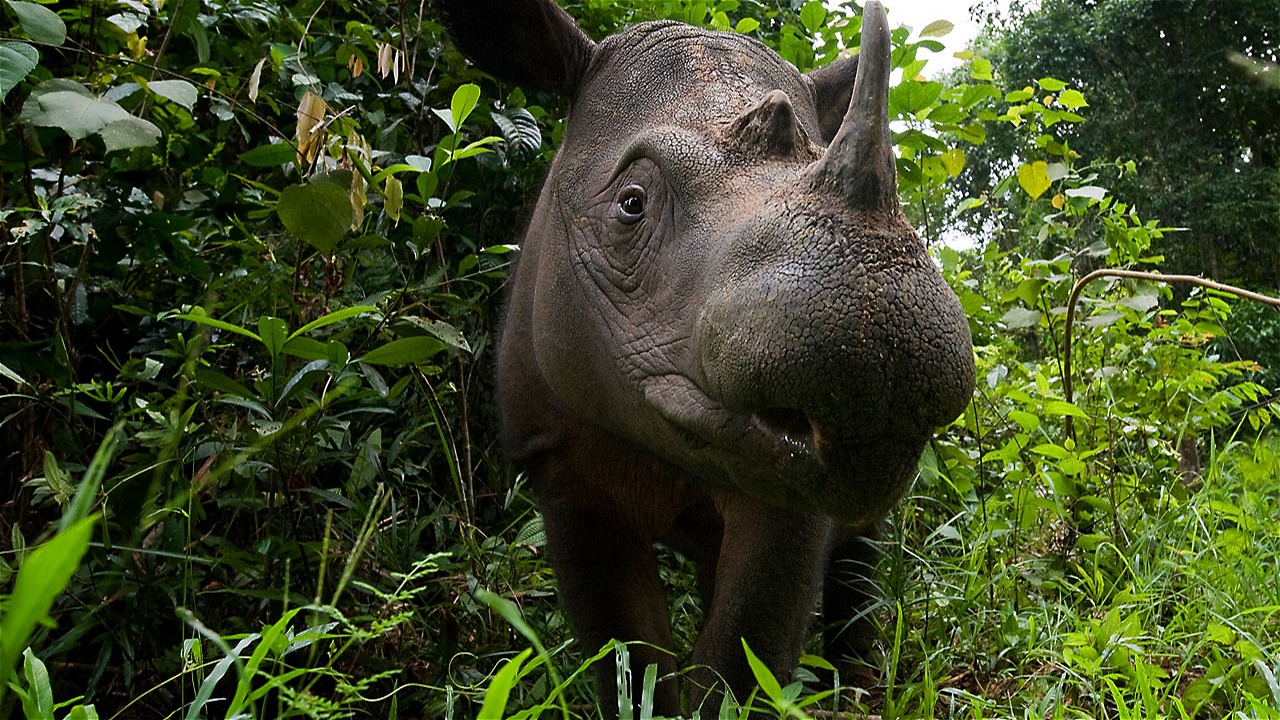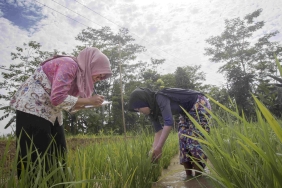SUMATRAN RHINO RESCUE MISSION
By: Hijrah Nasir
The sun was still low when the team entered Balik Bukit Resort within Bukit Barisan Selatan National Park (TNBBS). With a carrie on their backs, the team entered the heart of the tropical rainforest at the southern tip of Sumatra in search of the most endangered large mammal, the Sumatran Rhino. The team consisting of WWF, YABI, Masyarakat Mitra Polhut (MMP), and Balai Besar TNBBS officers collaborated to conduct occupancy and trajectory surveys for 15 days to find signs of the Sumatran Rhino's presence.
The Balik Bukit Resort area is included in the Intensive Protection Zone area for Sumatran Rhinos, precisely in the central part of TNBBS. The hilly topographic conditions that are included in the BBS hills cluster with an altitude of up to 1,000 meters above sea level and a slope of 200 - 800 are a challenge for the team. In some parts there are steep cliff walls and also the high level of rainfall sometimes makes it difficult for the team to conduct surveys. In this occupancy survey, the team was sometimes required to cut through the contours of the hills and down the valley in rainy conditions, which made the path slippery and dangerous. But the spirit to carry out the mission of saving the Sumatran Rhino always gives new hope and enthusiasm.
Occupancy survey is a method used to determine the level of occupancy of Sumatran Rhino animals based on signs of presence left behind such as tracks, feces, feed marks, etc. At locations with findings believed to be rhinos, camera traps are installed to confirm the presence of rhinos and obtain visual evidence. Meanwhile, the trajectory is carried out by following the signs of the presence of rhino animals. When the team finds a new sign, the team will follow the sign to find more complete evidence of the presence of rhinos if possible up to direct encounters.
From a series of efforts made to save the Sumatran Rhino in TNBBS, the team found quite convincing findings. Although not yet monitored with camera traps, but from the results of occupancy carried out, signs of rhino presence were found in the form of footprints, feces in small tributary streams and feed marks. This finding was followed up by conducting a trajectory. Unfortunately, from the trajectory results, the team only managed to find treads and feces on the trajectory path. High rainfall and wet ground conditions can immediately erase tracks, making it difficult for the team to continue the survey. However, camera traps were still installed to obtain further evidence.
Not only did the team find signs of Sumatran rhinos, they also found signs of other animals such as sun bears, tapirs, tigers and deer. From the observation results, the findings are still dominated by signs of tapir presence that can be found in each observation segment, both in the form of tracks, feces, and food marks.
Although TNBBS is designated as a Tropical Rainforest Heritage Site (TRHS) by UNESCO, threats to the existence of animals in this area have not diminished. Evidence of hunting is still found in several survey locations, characterized by the discovery of traces of hunter camps and abandoned fishing camps. Although Kubu Perahu Resort is the core zone of TNBBS, threats are still found although very minimal.
Unfortunately, the Sumatran Rhino as the remaining ancient animal still faces the threat of poaching and habitat fragmentation because their "home" is increasingly narrowed due to land conversion and the high number of illegal activities in the forest which urges them to move to isolated locations that are difficult to reach, thus reducing the level of detection by the survey team. Therefore, this survey is part of the Sumatran Rhino rescue mission in TNBBS, which requires intensive and comprehensive efforts to ensure that their existence is protected in nature.





